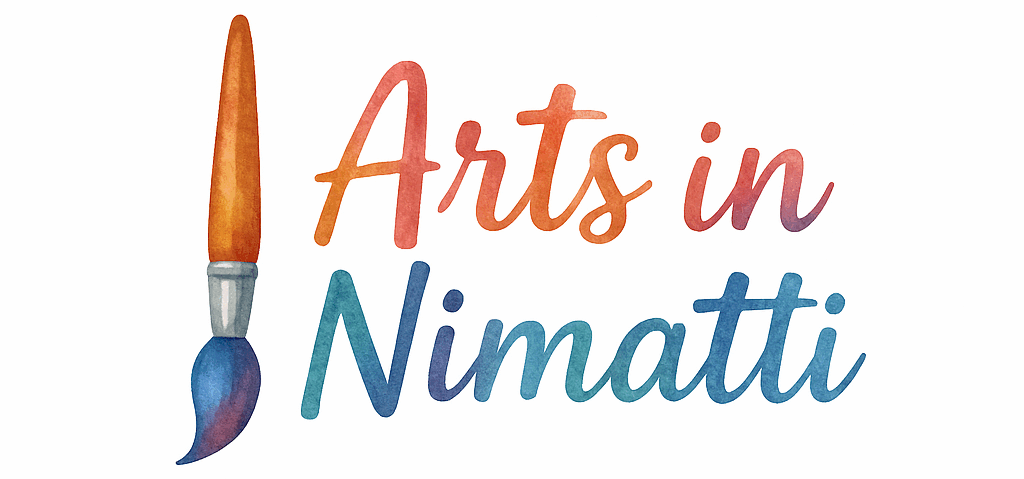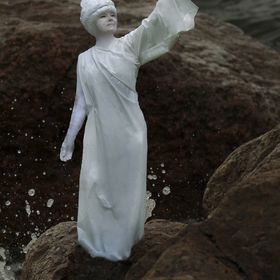Whether you’re splashing color on canvas for the first time or you’ve been painting for years, having the right brush in hand can feel like wielding a magic wand. In this guide, we’ll dive into 6 brush types and show you how to wield each one like a seasoned artist. By the end, you’ll know which brush to pick for every stroke, and you’ll be ready to create vibrant, expressive art that leaps off the page. Ready to level up your brush game? Let’s go!
Introduction to Brush Types
Imagine trying to carve a statue with a spoon. That’s what painting with the wrong brush feels like—it works, but oh, the frustration! Choosing the right brush is like picking the perfect tool for any job. From broad washes to razor-sharp details, the right brush transforms a struggle into smooth sailing. For more inspiration, check out our gallery of artist favorites.
Why Brushes Matter in Your Art
Your brush is an extension of your hand—almost like a dancing partner. Pick the wrong one, and you’ll be stepping on each other’s toes; choose the perfect match, and you’ll glide across the floor. The shape, size, and material of your brush determine texture, line quality, and even drying time. Understanding your brushes is your first step toward artistic freedom.
Overview of 6 Brush Types
Before we get tactical, here’s a quick list of the 6 brush types we’ll cover:
- Round Brushes
- Flat Brushes
- Filbert Brushes
- Fan Brushes
- Angle Brushes
- Detail/Spotter Brushes
These brushes will become your new best friends—each with its own personality and superpower. Curious about your own style? Explore our creativity tag for tips.
Brush Type 1: Round Brushes
Characteristics of Round Brushes
Round brushes have a pointed tip and a round belly, making them incredibly versatile. Think of them as the Swiss Army knife of paintbrushes. They hold a decent amount of paint, can create fine lines, and also cover larger areas when you press down.
When to Use Round Brushes
- Detail Work: Perfect for outlines and intricate patterns.
- Fill Areas: Gentle pressure gives broader strokes.
- Sketching with Paint: Great for underdrawings and loose sketches.
For more on foundational skills, check our painting tips section.
Brush Type 2: Flat Brushes
Characteristics of Flat Brushes
Flat brushes have a rectangular shape with long bristles—ideal for bold, sweeping strokes. Picture a credit card scraping paint across the canvas, giving you that chunky, textured look.
When to Use Flat Brushes
- Large Washes: Cover big areas quickly.
- Sharp Edges: Drag the brush to create clean lines.
- Blending: Softly sweep edges together for seamless transitions.
Explore more advanced methods on our art techniques page.
Brush Type 3: Filbert Brushes
Characteristics of Filbert Brushes
Filberts are half-way between round and flat, with an oval-shaped tip. They’re like the melodious bridge between a trumpet and a saxophone—versatile and smooth.
When to Use Filbert Brushes
- Soft Curves: Ideal for painting petals and organic shapes.
- Feathered Edges: Blend strokes without harsh lines.
- Portrait Work: Perfect for skin tones and subtle transitions.
Brush up on your techniques with our art tutorial series.

Brush Type 4: Fan Brushes
Characteristics of Fan Brushes
Fan brushes have bristles spread out like a handheld fan. They excel at creating texture—think grass, hair, or dreamy cloud formations.
When to Use Fan Brushes
- Textures: Leaves, grass, fur—easy peasy.
- Dry Brushing: Lightly drag for scratchy, expressive marks.
- Blending Sky & Water: Create soft gradients with a gentle sweep.
If you’re teaching yourself outdoors, our art classes tag has plein air tips.
Brush Type 5: Angle Brushes
Characteristics of Angle Brushes
Angle brushes have bristles cut at an incline, giving you both sharp edges and broad strokes. They’re like the dynamic pivot in a modern dance routine.
When to Use Angle Brushes
- Precision Lines: Edges of architecture or geometric shapes.
- Filling Corners: Allows you to burrow into tight spaces.
- Calligraphic Strokes: Vary line thickness with a turn of the wrist.
For a deeper dive into the artist’s lifestyle, wander over to artist life.
Brush Type 6: Detail/Spotter Brushes
Characteristics of Detail Brushes
These are small, round brushes with a very fine point—like holding a microscopic pen. They’re engineered for pinpoint accuracy.
When to Use Detail Brushes
- Tiny Highlights: Reflective glints in eyes or jewels.
- Fine Lines: Hair strands, intricate patterns, and whispers of texture.
- Dot Work: Perfect for stippling techniques.
Show off your portfolio-worthy pieces at our art portfolio hub.
Caring for Your Brushes
Your brushes deserve TLC if you want them to last longer than a single project. Think of them as old friends—treat them right, and they’ll never let you down.
Cleaning Techniques
- Rinse Immediately: Don’t let paint dry on the bristles.
- Use Gentle Soap: Baby shampoo or brush cleanser works wonders.
- Reshape Bristles: Gently form the tip back to its original shape.
Dive into the business side of art by valuing your tools!
Storage Tips
- Vertical with Bristles Up: Prevents bending.
- Dry Completely: Storing wet brushes invites mold.
- Use a Roll-Up Case: Great for travel—see more on art travel.
Tips to Practice Like a Pro
Even Picasso didn’t paint masterpieces overnight. Practice exercises keep your skills sharp and your confidence soaring.
Exercises to Hone Your Brush Skills
- Line Drills: Draw straight, curved, and zigzag lines.
- Circle Challenges: Fill circles of varying sizes without wobble.
- Texture Trials: Grass, fur, bricks—push your brushes.
Build your creative routine with creative habits.
Conclusion
Mastering these 6 brush types is like unlocking a secret language. Each brush has its own dialect—once you learn them, you’ll speak fluently on canvas. From the Swiss Army knife rounds to the pinpoint spotters, you now have the roadmap. Don’t forget to revisit your favorite brushes, give them proper care, and keep practicing your new exercises. Your next masterpiece is just a brushstroke away! For more on balancing art and life, explore our artist lifestyle tips and even turn your passion into profit through online art sales.
FAQs
- What’s the best brush to start with?
A medium-sized round brush is your Swiss Army knife—great for sketching, filling, and detailing. - How often should I clean my brushes?
Ideally, after every painting session. Rinsing immediately prevents bristles from splaying. - Can I use one brush for multiple mediums?
It’s possible, but we recommend dedicated brushes for acrylics and oils to avoid cross-medium contamination. - What’s the difference between filbert and flat brushes?
Filberts have rounded edges for soft curves, while flats give crisp, angular strokes. - How do I know when to replace a brush?
If bristles are permanently frayed or the ferrule is loose—even thorough cleaning won’t fix that. - Are synthetic brushes as good as natural bristles?
Modern synthetics rival natural hair, especially for acrylics. They’re also cruelty‑free. - How do I store brushes long‑term?
After cleaning and drying, wrap them in a roll-up case or stand them upright in a jar to keep bristles pristine.
3/3
o4-mini

